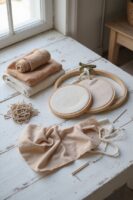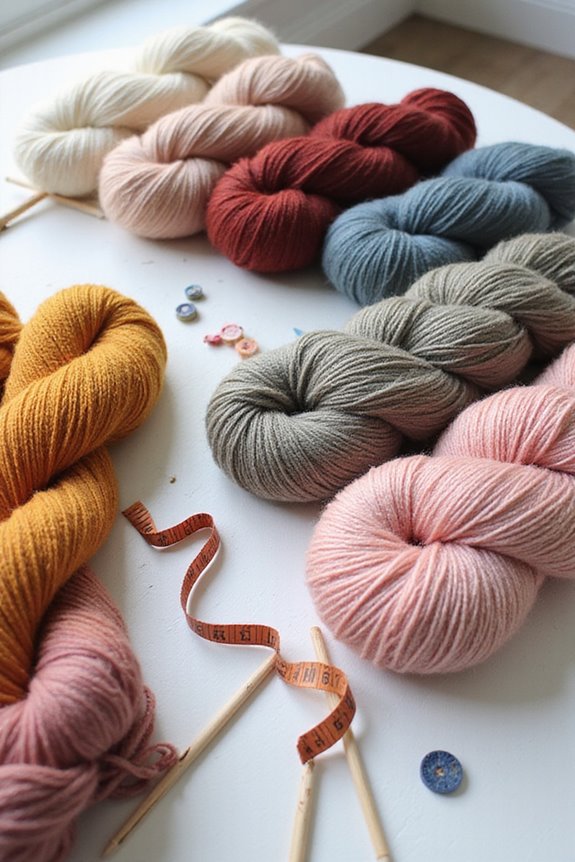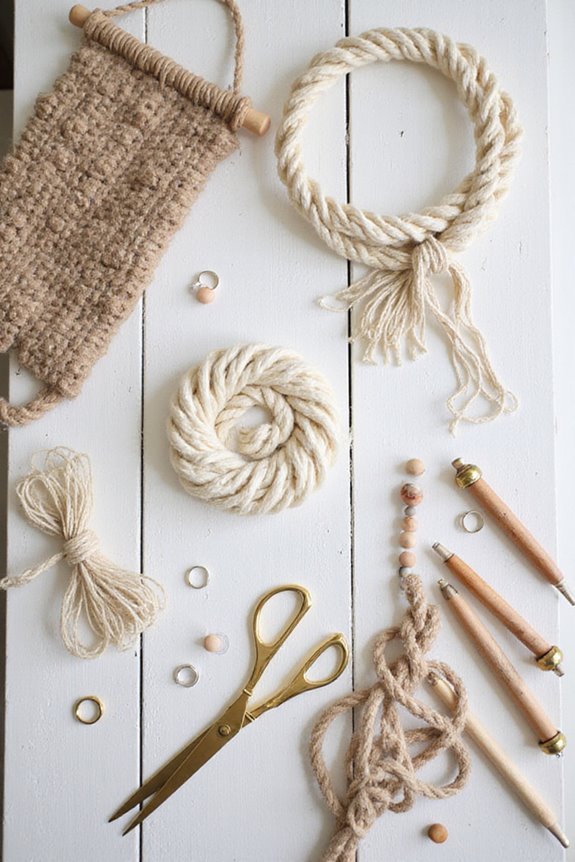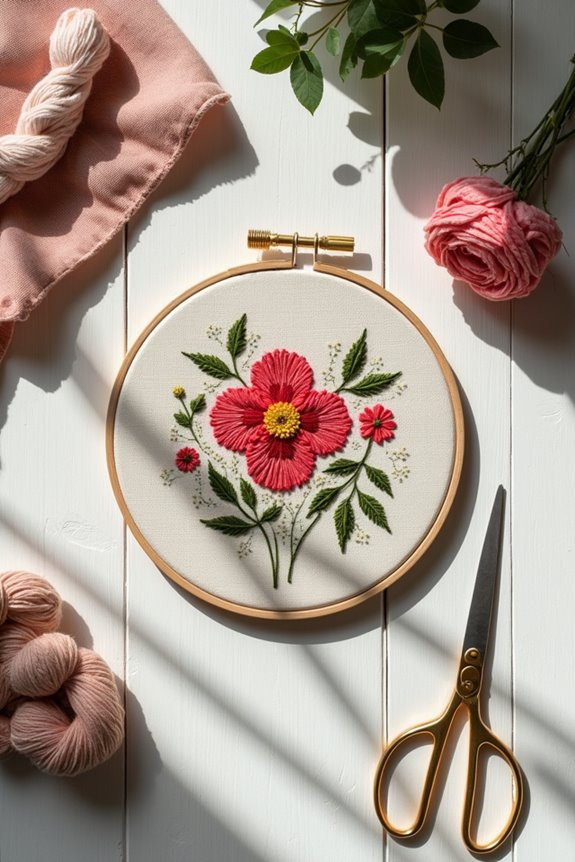When we’re choosing the best paints for glass painting, we find acrylic and enamel paints are top picks. 🎨 Acrylics are water-based, easy to clean, and non-toxic. Enamels, on the other hand, offer great durability but require heating for best results. 💡 Popular brands like Pebeo Vitrea and Martha Stewart provide vibrant options for various projects. Remember to prepare the glass well and use quality tools for the best finish. Stick around to explore more tips and techniques!
Key Takeaways
- Acrylic paints are beginner-friendly, water-based, and easy to clean, making them ideal for glass painting projects.
- Enamel paints offer outstanding durability and glossy finishes, though they require heat curing for the best results.
- Popular brands like Pebeo Vitrea produce dishwasher-safe paints suitable for drinkware after proper baking.
- Martha Stewart Glass Paints provide a wide color selection with air-dry capabilities, versatile for various projects.
- Always use high-quality tools and follow drying and curing methods for optimal outcomes in glass painting.
Types of Glass Paints
When it comes to selecting the right glass paint, we’ve got a variety of options that suit different projects and techniques. 🎨 Knowing the types of glass paints available can help us choose the perfect one for our needs.
- Acrylic Paints: These are water-based and non-toxic, making them great for beginners. Their major acrylic advantages include easy cleanup and the option to air-dry or heat-set for durability.
- Enamel Paints: With oil-based or water-based options, these paints boast glossy finishes and outstanding durability. Understanding enamel characteristics like their slow drying time and the need for heat curing will aid in achieving beautiful results. Additionally, many glass paints, including non-toxic formulations, are safe for use by children and can wash off easily with soap and water while wet.
Popular Brands and Their Features
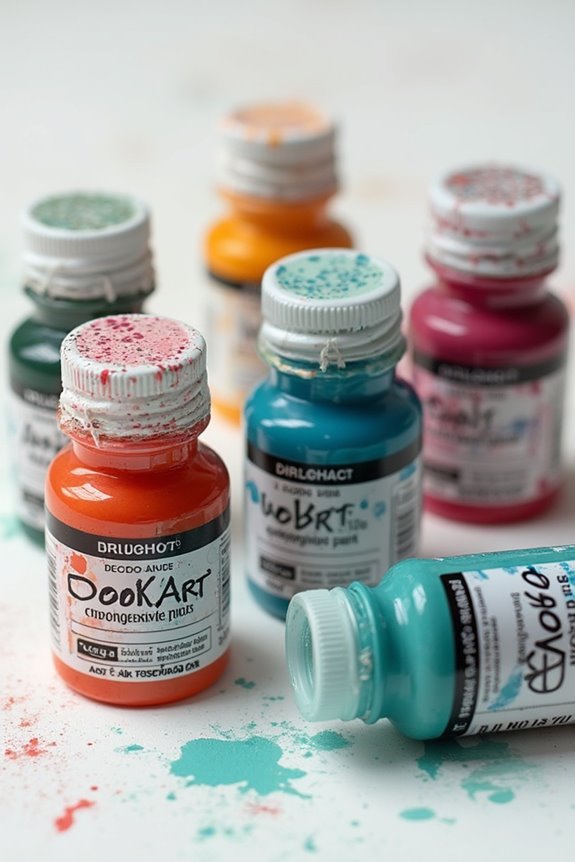
There are several popular brands that stand out in the world of glass painting, each offering unique features that cater to different artistic needs. 🎨 Understanding these brands helps us pick the right one for our projects, whether we’re aiming for vibrant decorative pieces or durable functional items.
- Pebeo Vitrea: Ideal for drinkware, they’ve got rich jewel tones and dishwasher-safe options after baking at 320°F.
- Martha Stewart Glass Paints: Offers 120 colors in several finishes, and they air-dry tack-free, making them perfect for any project.
- DecoArt: Features textured designs with easy-to-use paints, while FolkArt claims user-friendly squeeze bottles for beginners. Additionally, many paint brands provide non-toxic acrylic paints to ensure a safe and vibrant painting experience.
Application Techniques and Tools
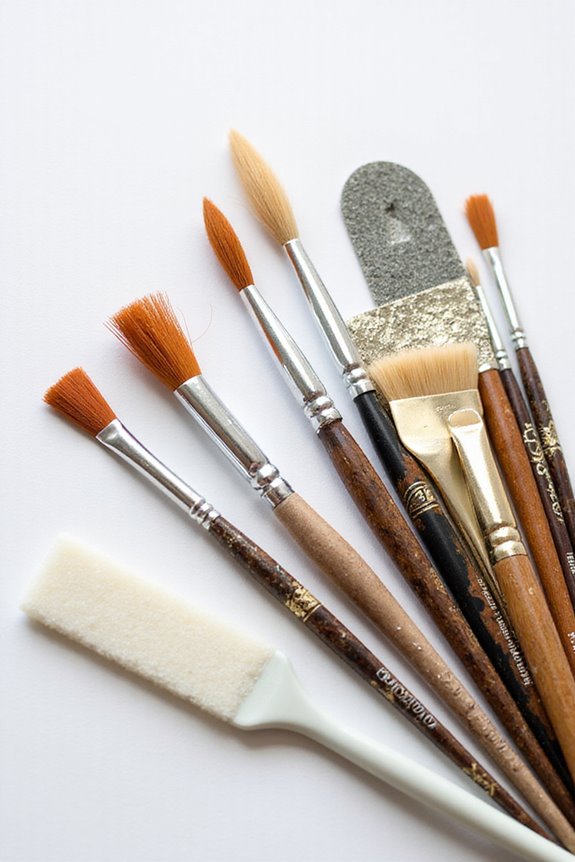
Mastering application techniques and selecting the right tools can make all the difference in glass painting. To start, we recommend thoroughly cleaning glass with rubbing alcohol or soapy water. Holding it by the edges prevents unwanted oils from touching the surface.
When it comes to tool selection, using fine detail brushes or ox hair mops can enhance precision. For outlining, paint markers are a great choice, while stencil tape helps create crisp lines.
We should apply paint in thin layers, opting for multiple light coats to achieve depth. Testing the paint’s consistency on a light box guarantees a smooth finish. Let’s remember, using the right application methods improves adhesion, minimizes paint separation, and assures a stunning final result! 🎨 Additionally, ensuring your tools are made from high-quality materials can significantly affect the overall outcome of your glass painting project.
Drying and Curing Methods
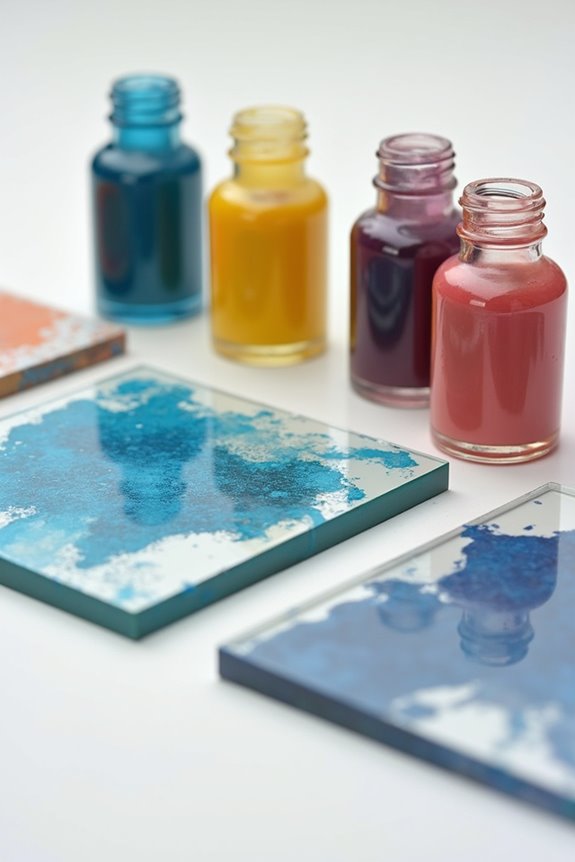
After we’ve got our application techniques down, it’s time to reflect on how to properly dry and cure our painted glass. We have two main methods to evaluate: air drying and oven baking.
- Air Drying: For this method, we’ll let the painted glass air dry thoroughly, usually for about 21 days. This allows the paint to bond without heat, reducing the risk of breakage. However, keep in mind that air-dried paint isn’t always dishwasher safe. Additionally, quick drying time can minimize the risk of smudging during the air drying process.
- Oven Baking: To create a more durable finish, we can place our painted glass in a cool oven set to 350ºF (177ºC) for 20-30 minutes. This method allows for hand washing and possibly top-rack dishwasher use. Just make sure the glass is dry to the touch before baking!
Safety Considerations
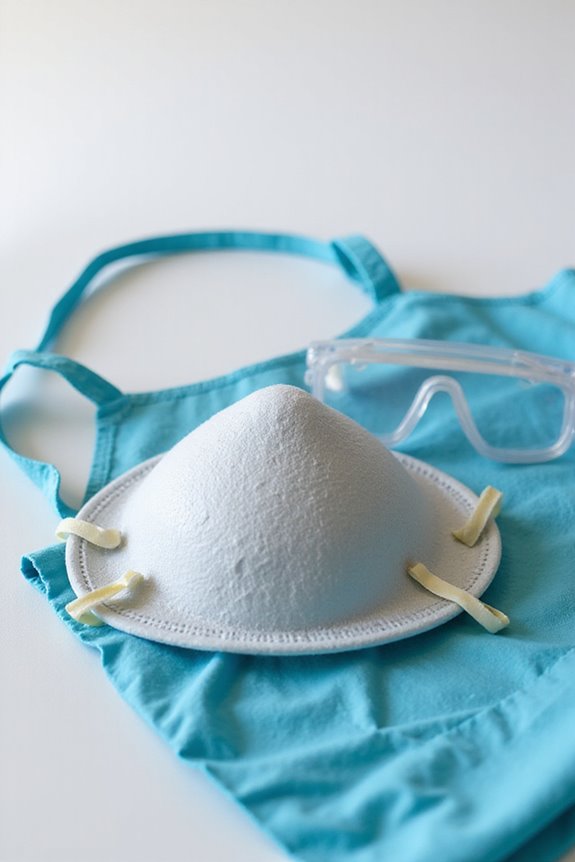
When we plunge into glass painting, safety must be a top priority to protect ourselves and the environment. Many glass paints contain toxic heavy metals, which pose serious health risks. To stay safe, we should always use protective measures such as:
- P2 respiratory masks to avoid inhaling harmful dust and fumes.
- Gloves to prevent skin contact with dangerous materials.
- Goggles to shield our eyes from splashes and glass shards.
We must work in well-ventilated areas and clean surfaces regularly. Always store paints securely, and never eat or drink in the workspace. Finally, dispose of paint residues as hazardous waste to avoid environmental harm. Keeping a first aid kit handy can also help in case of accidents. 🌱🧯 Additionally, using non-toxic materials can further enhance safety during creative projects.
Versatility of Glass Paints
Having considered safety measures, we can now explore the versatility of glass paints and how they can bring our artistic visions to life. Glass paints allow for incredible creativity, enabling us to experiment with various techniques like paint layering and color blending.
Here’s how we can maximize our glass painting:
- Acrylic paints: Quick-drying and perfect for both sides of glass.
- Enamel paints: Offer durability but take longer to dry.
- Markers: Great for detailed accents with a wide color range.
Frequently Asked Questions
Can Glass Paints Be Mixed for Custom Colors?
When we blend colors, transforming paint consistency becomes an artistry. With careful choice and techniques, we can create stunning custom shades on glass, merging hues like twilight in a vibrant sunset. Let’s explore this colorful journey together!
How to Remove Dried Glass Paint From Surfaces?
When tackling glass paint removal, we recommend using gentle scrapers and effective cleaning solutions like vinegar or rubbing alcohol. This combination simplifies the process while preserving the glass surface’s integrity and clarity.
Are There Eco-Friendly Glass Paint Options Available?
When we immerse ourselves in eco-friendly glass paints, we’re embracing a palette of sustainability. Many eco-friendly brands use sustainable materials, welcoming vibrant creations that honor our planet, and ensuring our artistic journey is both joyful and responsible.
What Types of Surfaces Can I Use Glass Paint On?
When we explore what surfaces we can use glass paint on, we find smooth, non-porous options work best. Surface preparation is key; thorough cleaning enhances adhesion, ensuring our glass paint techniques shine beautifully on every project.
How Long Do Glass Paintings Last Outdoors?
Oh, if only glass paintings had the magical weather resistance we dream of! In reality, longevity factors tell us they might last 3 to 5 years outdoors—if we’re lucky—and maintenance is key for survival!


